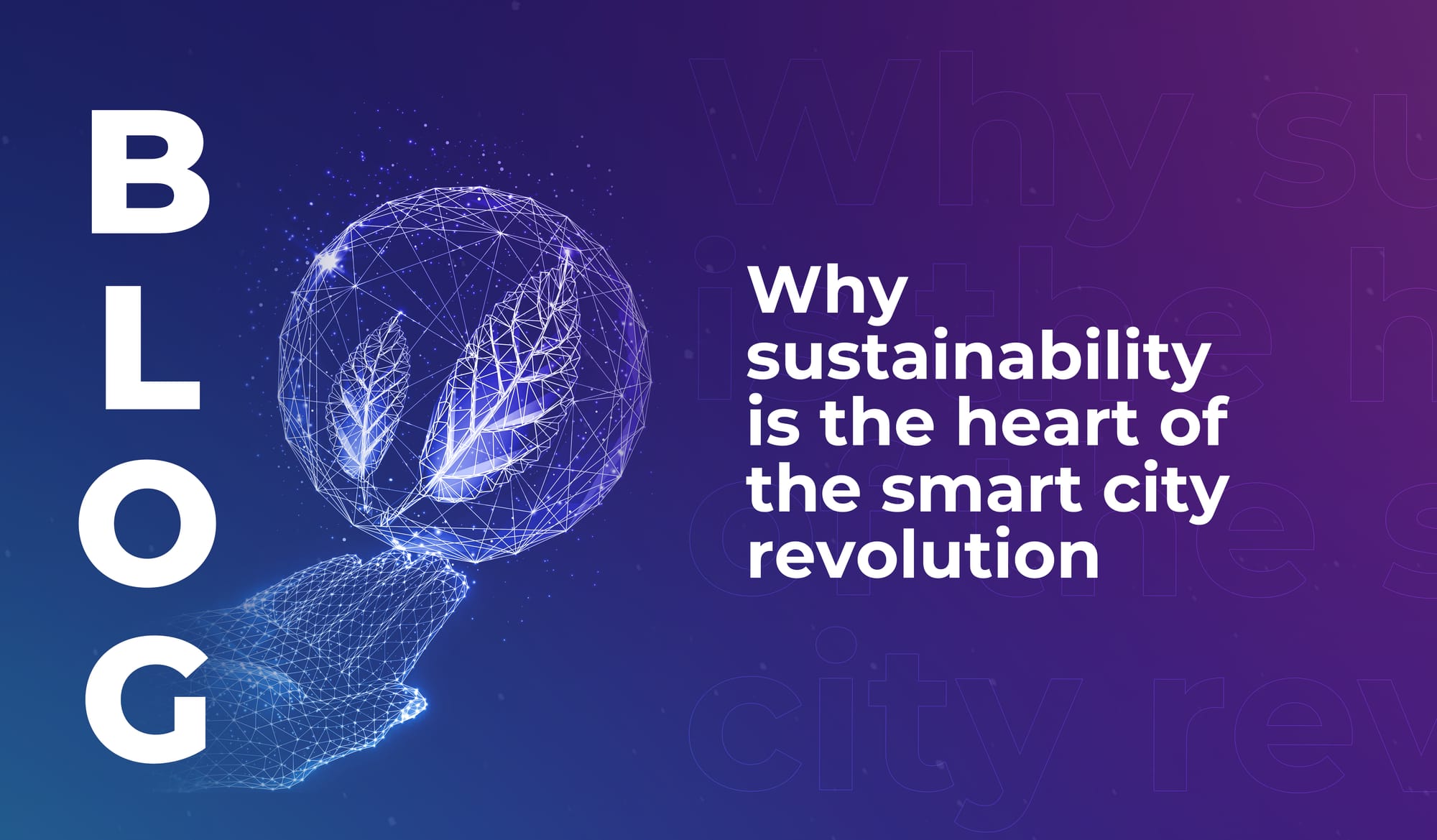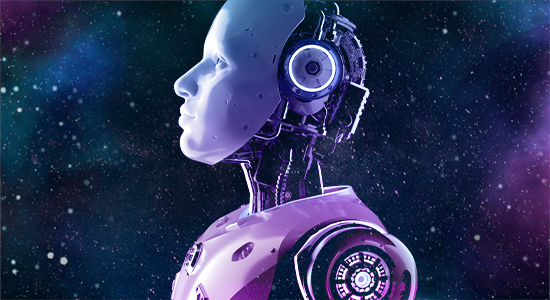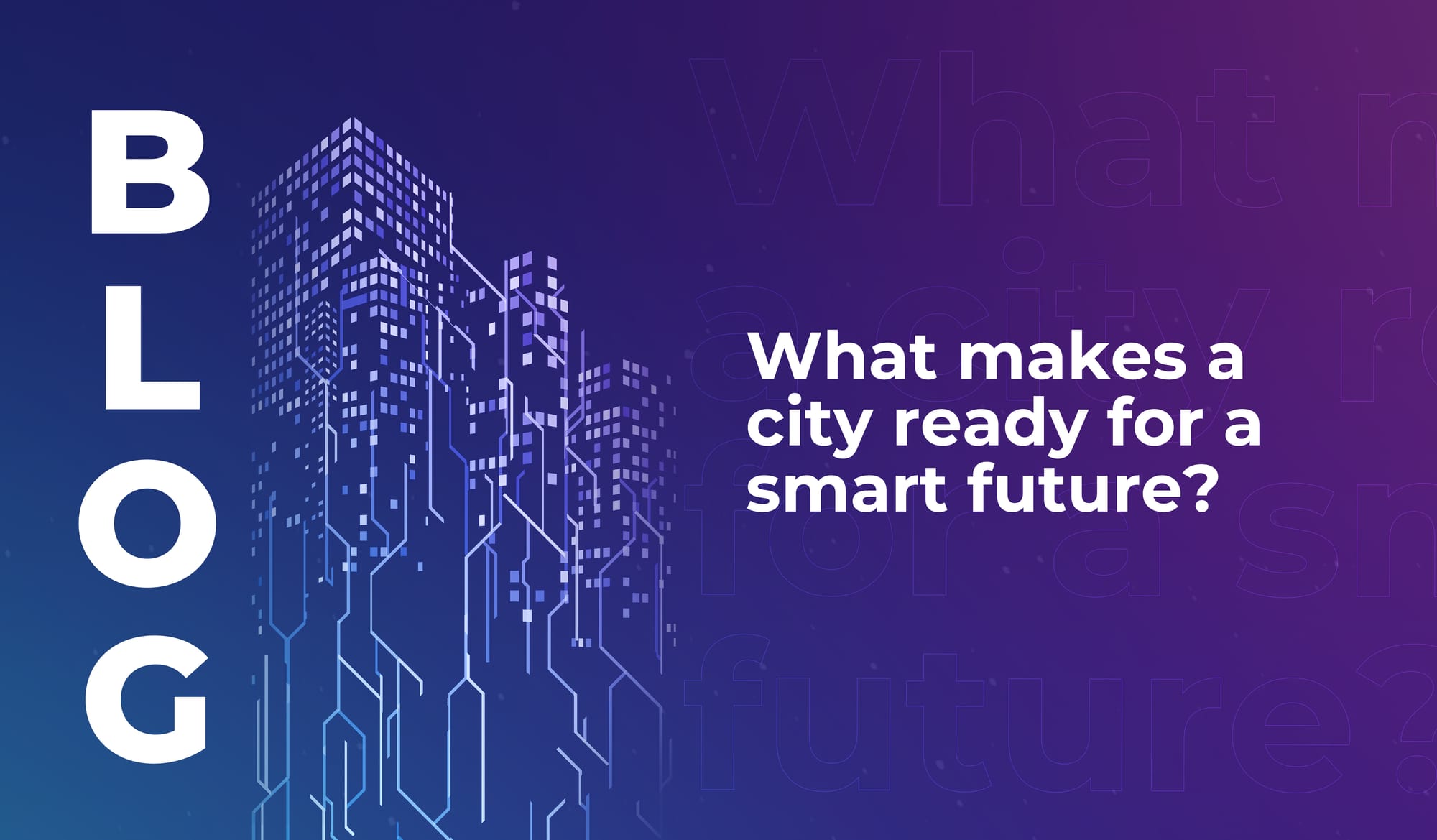
Why sustainability is the heart of the smart city revolution
The smart cities of the future will use tech to lower emissions, cut urban temperatures, and improve quality of life in highly populated areas.


Will Robots Take Over The Future? 2022 Robotic Facts & Stats That Confirm This
With substantial advances in the science of AI and robotics, many have presumed we’re witnessing a new era of robotics being part of every aspect of people’s everyday lives – and it’s not in the far-off future.
Will robots replace humans? Will automation have an impact on humans losing their jobs? Will robots rise as minds of their own? These questions have been a few of many on the horizon of the vast discoveries and implementation of new AI innovations that are changing industries and lives as we speak.
From massively improving our lives in a myriad of ways to having consequential risks that aren’t limited to data violation and manipulation, artificial intelligence seems to be a rapidly-growing, double-edged sword that requires a confrontation with prompt caution.
Delving into some of the most prominent robotics facts and statistics, we will be able to decide whether to fear or embrace the great powers of AI. Read on to take a closer look at the robotics statistics and predictions and where AI has an earned place in Saudi Arabia.
Top Robotics Stats and Facts 2022
Robotics and Business: A Higher Economic Growth
“88% of businesses worldwide plan to adopt robotic automation into their infrastructure.”
A top indicator of the industrial robotics sector’s growth dynamic, this robotic stat is here to show us that the deployment of AI in businesses will skyrocket in the following decades at an unprecedented rate as technology becomes more sophisticated over time. AI and robotics have the potential to double economic growth in developed countries by 2035, according to the World Economic Forum (WEF).
Robotics and Employability: Threatening Jobs and Offering Opportunities
“150,000 people worldwide are employed by the robotics industry in engineering and assembly positions.”
Most leading industries plan on adding robots and automation to their companies’ daily operations, but it comes at a cost. As automation promotes economic growth, the transition to a robotic-class-led future will benefit some workers and raise challenges for others. Economists theorize that robots will displace low-skilled labour but complement the high-skilled ones.
According to the World Economic Forum, from 2020 to 2025, 85 million human jobs will be taken by machines, but 97 million will be created. Thus, even though a disruption in employment has occurred due to automation, Robots will not represent a direct threat to human replacement in the workforce. Instead, new technology is expected to replace and excel at the more easily automated, tedious or hazardous aspects of jobs, giving the workers more time and energy for tasks that require creative thinking within the scope of their role.
Robotics Industry Statistics in China; The Uncontested Market Leader
“China proves to be the most significant industrial robotic consumer with 310,000 installations; the highest in the world in 2021.”
The US isn’t the only country implementing robotics, with China retaining over a third of the entire market, purchasing nearly 6.7 billion US dollars in industrial robotics in 2022.
Making breakthroughs, global industrial robotics statistics for 2021 show that China is the highest industrial robotics consumer in the world, with 310000 setups. Coming in second with 61,000 installations would be Japan. And in third place, South Korea and the United States tie in with 46,000 installations.
China has been the world’s largest market for industrial robots for 8 years in a row, reaching a benchmark of 246 robots per 10,000 employees in 2020 in manufacturing industries. The country has comprehensively dominated the market in the Asian Pacific Region with 2 95,733 units of new installations of industrial robots.
Source(s): International Federation of Robotics; Statista
Robotics Statistics by Industry Sector
Robotics in the Automotive Industry
With about 900,000 industrial robots in use as of 2017 and more being added every year, the automotive industry is at the forefront of industries using the most industrial robots.
Revenue in the Automotive Industry Robotics segment is projected to reach US$0.95bn by the end of 2022 and in comparison, most revenue will be generated in Japan.
The electrical and electronics industry follows the automotive industry sector with almost 600,000 industrial robots and the plastics and chemicals industry with about 200,000.
Robotics in Healthcare
The global market size of robots in the healthcare sector will be worth $3.28 billion by the end of 2025.
Healthcare is one of the promising sectors in robotics, where its usage has found success in recent times, especially in the use of collaborative robots (cobots). With a growing rate of surgery-assisted robots that enable doctors to perform complex operations with more precision, speed, flexibility, and control.
15.1% of all general surgeries performed in 2018 were robot-assisted.
In comparison to the 1.8% robot-assisted in 2012, we’re witnessing a significant increase in percentage. Even though the benefits of robots in surgery are controversial and highly costly, there’s an argument that robotically performed surgeries can reduce the risk of infection in patients and speed up their recovery process.
From Robear, the bear-shaped robot that can move patients in and out of their sickbeds up to 40 times daily, to the Xenex robot that reduces infections acquired by hospitals by 70%, the statistics on robotics innovation in healthcare show immense worldwide improvement in the healthcare sector.
Robotics Statistics by Employer
Honda Motor Leads the Way as the Biggest Robotics Company Worldwide.
Leading the world in Robotics Research, Honda Motors devised the term Honda Robotics to represent the company’s collective robotics technologies and development of humanoid robots represented by ASIMO. The company, headquartered in Tokyo, Japan, is known for creating robots to assist people with walking obstacles and interactive robots that recognize people’s emotions and communicate with sound, movement, and facial expressions.
Amazon Cobots (Collaborative Robot) Save the Company as Much as $22 Million Every Time They Are Added to a Newly Opened Warehouse.
With warehouses as that of Amazon’s, workers are left to work a hard equation between navigating the warehouse and productive tasks like fulfilling orders.
Using robotic technology, Amazon has successfully balanced the productivity of its workers and increased its inventory management efficiency with cobots like “Kiva”.
Robotic Process Automation Statistics
Robotic Process Automation adoption is on the rise, with more organisations of all sizes adopting it worldwide. Hence it is clearly growing at an accelerated pace.
What Is Robotic Process Automation (RPA)?
Also known as Software Robotics, RPA is a software technology that makes it easy to build and manage software robots that mimic the way humans interact and perform actions with digital systems and software based on bots.
RPA Industry Uses
RPA tends to create new efficiencies and ease repetitive, back-office human tasks across a swath of industries and processes. Ranging from financial services. healthcare and manufacturing to the public sector, retail and far beyond, enterprises have implemented RPA in diverse areas.
RPA Stats
81% of companies are investing in Robotic Process Automation technology to achieve their financial saving goals.
With an adoption rate increasing from 12% in 2019 to 20% in 2021, RPA is witnessing a huge rise – and that’s just for starters.
Robotics in Saudi Arabia
Not only will the deployment of AI and robotics in Saudi Arabia accelerate its digital transformation and the potential of Vision 2030, but Saudi Arabia could also benefit greatly from the advent of robotics technology, from helping with a labour shortage to establishing more robust Industry 4.0 technologies.
Undergoing huge economic progress since the country had announced its goals of leading a knowledge-based economy, Saudi Arabia embraces the advancement in the industry as per the realization of its Vision 2030 to transform the economy and the Kingdom. Currently adopting the innovation, the futuristic city of NEOM plays its part in deploying robotics and AI to achieve technological endeavors; committed to positioning itself as a city of the future in Saudi Arabia. Find out more about NEOM and the future of Robotics at LEAP, the global tech event bringing together 500+ expert speakers to discuss the hottest technology topics under one roof.
The Future of Robotics
Scar-E; A Potential Key to the Exploration of Asteroid Mining & Understanding Space
Robotics are advancing to enable scientists to drill asteroids for precious metals and possibly understating the solar system and space. The Asteroid Robotic Explorer known as Scar-e, is a six-legged robot capable of mining precious metals from asteroids such as iron, nickel and platinum.
Humanoids; Raising Controversies with Sophia & Teslabot
Humanoid Robots advancements set an ambitious goal for the future of Robotics. The humanoid robot is a robot that resembles the human body and mimics and engages with human interactions.
One of the attempts at developing humanoid robots is the robot Sophia, which was produced by a Hong Kong-based company called Hanson Robotics. This humanoid robot Sophia, who was granted citizenship of Saudi Arabia, can display more than 50 human facial expressions and gestures. The first robot to receive citizenship of any country uses voice recognition technology and can make a few simple human-like conversations.
To add to the futuristic AI robots, Elon Musk, who refers to self-driving cars as 4-wheeled robots, is planning to launch the first Tesla Bot prototype, a humanoid capable of performing boring tasks and helping in the household.
We can conclude that these prototypes were created to help humans with boring and mundane tasks, serving as companions and assistants to humans in their daily lives, but could they be destined for more?
Conclusion
Robotics are becoming increasingly integral in human and business trajectories. Whether we’re ready to accept it or not, as businesses progress and revenues and economies surge due to automation in every sector, robotics statistics show that more and more industries will keep on deploying robots and AI technologies for their positive impact. Inevitably, robots will displace human labour with regard to tasks that require repetitiveness, power and precision, leaving a positive indication of a new change for the human labour requirements on the horizon and where it’s headed.
The future of robotics is bright, from human assistance with humanoids and bots to crime detection and prediction with drones and AI technologies. In the end, we will have to embrace the great potential of AI, and learn and adapt to it at alarming speeds. It is foreseeable that with the powers of AI, comes an era of abundance, development and security.
Robotics FAQs
What Are the Types of Robotics?
There are two large segments of robotics based on the environment in which the robot operates. Robots can be classified by their application area: industrial or service sector.
Industrial Robotics: Industrial robots are used in industrial environments for manufacturing purposes.
Service Robots: Service robots focus on human interaction rather than process automation.
Why Are Robotics Surging?
In the context of automation, robots are designed to replicate human movements and can be used in various environments to support or replace human beings. Regardless of the robotics application area, companies invest in robotics for their increased efficiency.
How Big Is the Robotics Industry?
As of 2022, the robotics industry has a global market value of $43.8 billion, by revenue.
How Many Robots Are There in the Market?
There are over 12 million robots in existence, 2.7 million of which are industrial robots in use across the globe.
Where Are Robotics Most Prominent?
In regards to industrial robots, the Asia-Pacific region is the largest industrial robotics market, with the automotive and electronics sectors surging in sales. The largest number of industrial robots in operation has been in China since 2016.
As per the service robotics market, the Americas are at the forefront, with the medical application sector leading the way.

The smart cities of the future will use tech to lower emissions, cut urban temperatures, and improve quality of life in highly populated areas.

Discover the cities that rank highly for smart city preparedness, and learn why locally relevant innovation is more important than cutting-edge tech.

If you’ve ever thought about becoming a tech investor, read this – learn why investors are the quiet force shaping the future of the industry.

The smart cities of the future will use tech to lower emissions, cut urban temperatures, and improve quality of life in highly populated areas.

Discover the cities that rank highly for smart city preparedness, and learn why locally relevant innovation is more important than cutting-edge tech.

If you’ve ever thought about becoming a tech investor, read this – learn why investors are the quiet force shaping the future of the industry.